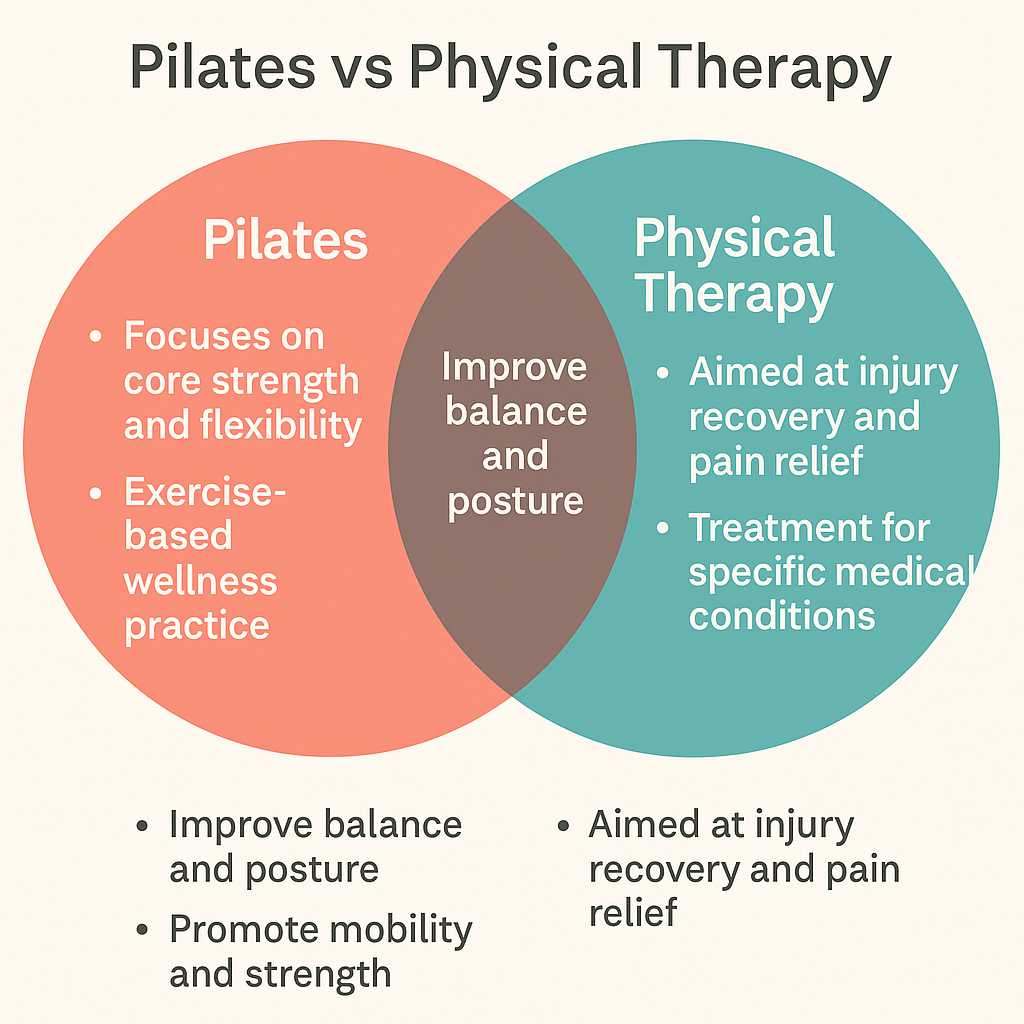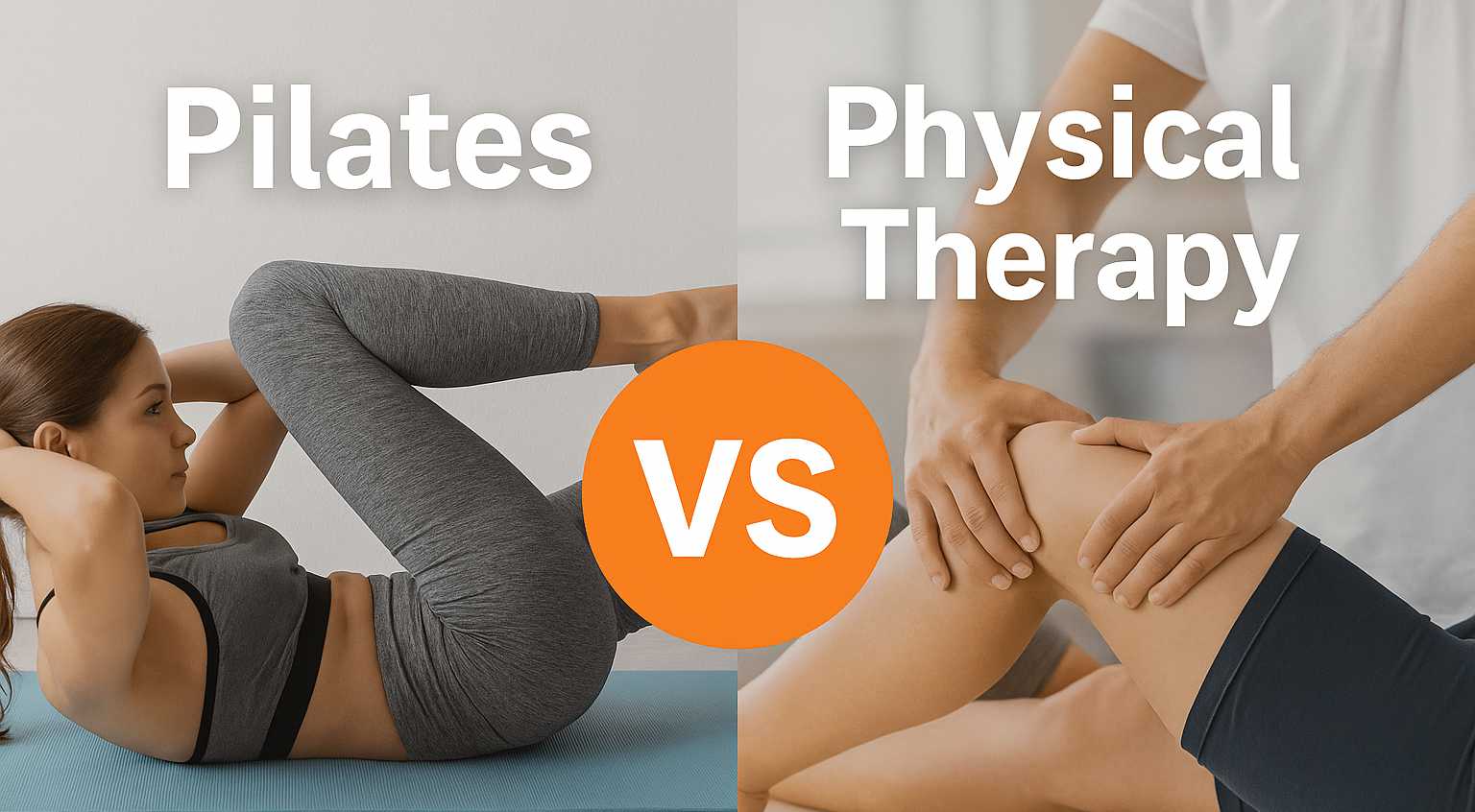When someone hears Pilates and physical therapy in the same sentence, the first reaction is often: aren’t they completely different? In truth, they share more than you might think.
Physical therapy is a clinical, licensed practice focused on healing injury, reducing pain, and restoring mobility. Therapists use manual techniques, strength training, and targeted exercises to treat conditions ranging from sports injuries to post-surgical recovery.
Pilates, on the other hand, was born as a movement method designed to build core strength, improve posture, and enhance flexibility. While Pilates isn’t medical treatment, its slow, controlled exercises mirror many of the techniques therapists use. That’s why so many clinics today are blending the two.
Similarities:
Both prioritize body awareness and alignment.
Low-impact and joint-friendly exercises.
A strong focus on core muscles, stability, and breathing.
Differences:
Physical therapy requires a license; it involves diagnosis and treatment of medical conditions.
Pilates is a fitness method; it focuses on overall strength and conditioning rather than rehabilitation.
Physical therapy is often covered by insurance; Pilates usually is not, unless integrated into clinical programs.
This balance of similarity and difference explains why hybrid centers exist: they bridge medical recovery with sustainable fitness.
Related Article: Physical Therapy Exercises
Reform Physical Therapy and Pilates
In New York, some centers embrace the philosophy of combining Pilates with therapy. Reform Physical Therapy and Pilates is one such example in concept: the idea of pairing reformer-based Pilates with evidence-based rehab. While the exact center name isn’t widely listed, NYC does have Pilates Reforming NY in Midtown (130 W 37th St), a studio leaning toward corrective exercise. It shows how Pilates principles can be applied with a therapeutic lens.
Be Fit Physical Therapy and Pilates
Although its main branch is based in Illinois, Be Fit Physical Therapy and Pilates demonstrates how clinics unite these two worlds. Patients often start with traditional therapy to heal injuries, then move into Pilates reformer sessions to maintain strength and prevent relapse. The philosophy is one NYC clients can relate to: rehab first, long-term strength next.

Connect Physical Therapy and Pilates
A similar blended approach can be seen at clinics like In Touch NYC Physical Therapy (New York, NY). While not carrying the exact “Connect” brand, it embodies the same mission—connecting licensed therapy with mindful Pilates training. Their sessions often include manual therapy, followed by reformer work that reinforces what was learned in treatment.
Pilates Fitness and Physical Therapy Center
If you’re looking for a complete integrative hub, consider Kinected Center in Chelsea (151 W 19th St, 2nd Floor, New York, NY 10011). It’s essentially a Pilates Fitness and Physical Therapy Center: therapists and instructors work under one roof, ensuring smooth transitions from post-op rehab to functional Pilates training. Patients here don’t just recover—they learn how to move better in daily life.
Related Article: Best Rated Physical Therapy
When to Choose Pilates, Physical Therapy, or Both
After injury or surgery → Physical therapy should always come first to address pain and rebuild movement safely.
Transition phase → Once cleared, Pilates helps continue progress without re-injury risk.
For prevention → Pilates is excellent for posture, balance, and keeping the body resilient.
Ongoing support → Blended centers provide both: medical expertise and movement mastery.
Final Thoughts
In the debate of Pilates vs. physical therapy, the answer doesn’t have to be one or the other. They’re complementary. Physical therapy treats, heals, and protects; Pilates strengthens, balances, and sustains. Together, they provide a full circle of care.
For New Yorkers, clinics like Pilates Reforming NY, In Touch NYC Physical Therapy, and Kinected Center offer real-life examples of how the two disciplines merge. Whether you’re coming back from injury or simply want smarter movement habits, these centers illustrate how Pilates and physical therapy can work hand in hand for long-term wellness.
